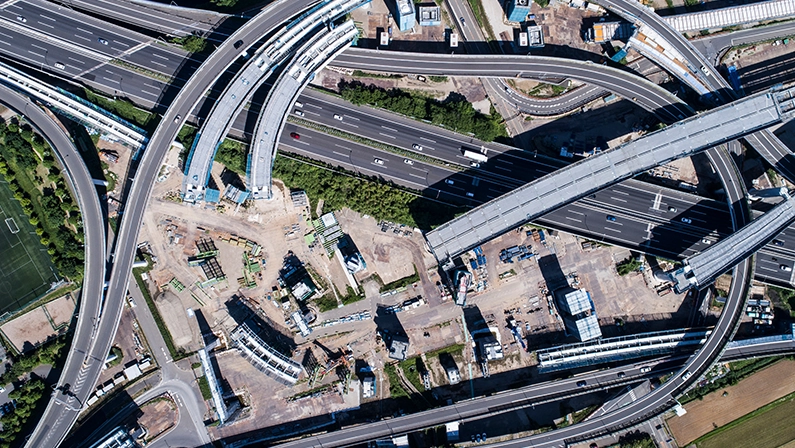Did you know that countries with well-developed infrastructure report higher GDP growth compared to those with outdated systems? From reliable roads to high-speed internet, infrastructure development plays a vital role in supporting businesses, communities, and entire economies. But what is infrastructure development, and why does it hold such significance in driving economic growth?
This article explores the relationship between infrastructure and development, examining its impact on productivity, the sectors it transforms, and the challenges that arise in building the foundations of progress.
What Is Infrastructure Development, and Why Does It Matter?
Infrastructure development refers to the creation, improvement, and maintenance of essential facilities and systems like transportation, utilities, and digital networks. It provides the backbone for economic activities, enabling businesses to operate efficiently and communities to thrive.
Without strong infrastructure, economies face bottlenecks that stifle growth. Well-planned infra development, on the other hand, reduces costs, improves connectivity, and fosters innovation. It’s no wonder that infrastructure is often called the lifeline of a modern economy.
How Does Quality Infrastructure Drive Productivity and Efficiency?

Quality infrastructure boosts economic productivity by minimizing delays, reducing costs, and streamlining operations.
For instance:
- Upgraded transportation networks lower logistics costs, allowing goods to reach markets faster.
- Reliable energy grids ensure uninterrupted operations for industries and businesses.
- Digital infrastructure, such as broadband networks, facilitates faster communication and supports remote work, enabling businesses to stay competitive in a global market.
Why Is Government Policy Vital to Infrastructure Development?
Governments play a crucial role in funding, regulating, and overseeing infrastructure developers to ensure that projects align with economic priorities. Policies like tax incentives for investors, public-private partnerships, and streamlined approval processes drive large-scale infra development.
For example, countries with clear infrastructure plans often attract more foreign direct investment, fueling long-term growth. Government support ensures that infrastructure projects benefit both urban and rural areas, fostering balanced economic development.
Which Sectors Benefit the Most from Infrastructure Investment?

Infrastructure investment impacts nearly every sector, but some industries experience the most transformative changes.
Here’s a closer look:
1. Transportation and Logistics
Upgraded roads, railways, and ports improve supply chain efficiency and reduce transit times, benefiting businesses that depend on timely deliveries.
2. Manufacturing
Reliable energy grids and transportation systems help manufacturers streamline production and distribution processes, lowering costs and increasing competitiveness.
3. Agriculture
Irrigation systems, storage facilities, and rural road networks enable farmers to increase yields, reduce waste, and access broader markets.
4. Energy and Utilities
Infrastructure investment in renewable energy sources and smart grids promotes sustainability and ensures reliable power supply for homes and industries.
5. Technology and Telecommunications
High-tech infrastructure development, such as 5G networks and data centers, fosters innovation and supports the digital economy.
6. Healthcare
New hospitals, clinics, and telemedicine networks improve access to quality healthcare, especially in underserved regions.
7. Retail and E-commerce
Efficient transportation and robust digital infrastructure enable faster deliveries, helping businesses meet growing consumer demands.
8. Tourism and Hospitality
Better airports, hotels, and attractions boost tourism, contributing to job creation and local economic growth.
What Are the Long-Term Economic Impacts of Infrastructure Growth?
Investing in infrastructure development leads to lasting benefits that ripple across economies and communities.
Some key impacts include:
- Job creation during and after construction.
- Enhanced global competitiveness for businesses.
- Reduced production and logistics costs.
- Improved quality of life for citizens.
- Attraction of foreign direct investment (FDI).
- Support for innovation and technology-driven growth.
Can Infrastructure Development Help Bridge Inequality Gaps?
Strategic infrastructure and development initiatives can reduce disparities by improving access to essential services like education, healthcare, and transportation in underserved areas. This inclusivity fosters economic mobility, empowering disadvantaged communities to participate in the economy.
For example, rural road projects enable farmers to access urban markets, while digital infrastructure in remote regions facilitates online learning and remote work opportunities.
What Challenges Arise in Planning and Executing Large-Scale Projects?

While infrastructure developers drive progress, they face numerous obstacles in bringing projects to fruition.
Here are some common challenges and potential solutions:
Funding limitations
Securing investments for large projects often requires public-private partnerships.
Regulatory delays
Streamlining approval processes and ensuring policy clarity can accelerate progress.
Environmental concerns
Adopting sustainable practices mitigates the ecological impact of infrastructure projects.
Skill shortages
Training programs can equip workers with the skills needed for modern infrastructure development.
How Does Technology Shape the Future of Infrastructure?
Technology is revolutionizing infrastructure development by enabling smarter, more sustainable solutions. Innovations like artificial intelligence (AI), the Internet of Things (IoT), and renewable energy systems are redefining how we design, build, and maintain infrastructure.
For instance, AI-powered traffic management systems reduce congestion, while IoT-enabled sensors monitor bridges and buildings for maintenance needs, ensuring safety and longevity. High-tech infrastructure development has now become a necessity for future-ready economies.
Building Better Economies with LSI’s Economic Development Services
Infrastructure development plays a vital role in creating sustainable growth by sparking innovation, reducing inequality, and strengthening global competitiveness. To build strong economies that can adapt and thrive, it’s essential to work with experts like LSI who understand the definition of infrastructure in economics and how to translate that understanding into meaningful results.
LSI specializes in providing customized solutions for infrastructure and development projects. Their approach includes everything from strategic planning to execution, ensuring communities and businesses benefit from initiatives that foster real progress.
Learn more about how LSI’s economic development services can help transform your region. Visit their website or reach out through their economic development page to explore solutions that create lasting growth.





